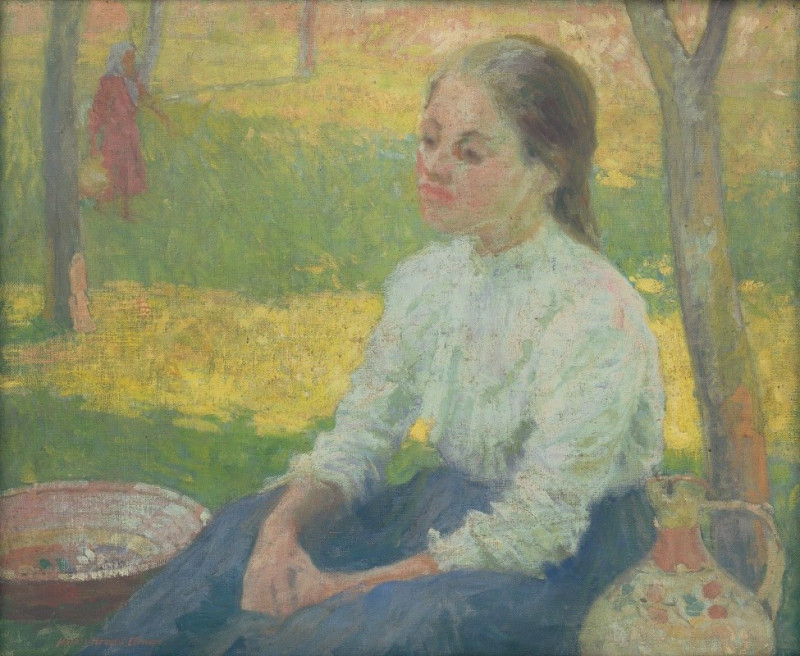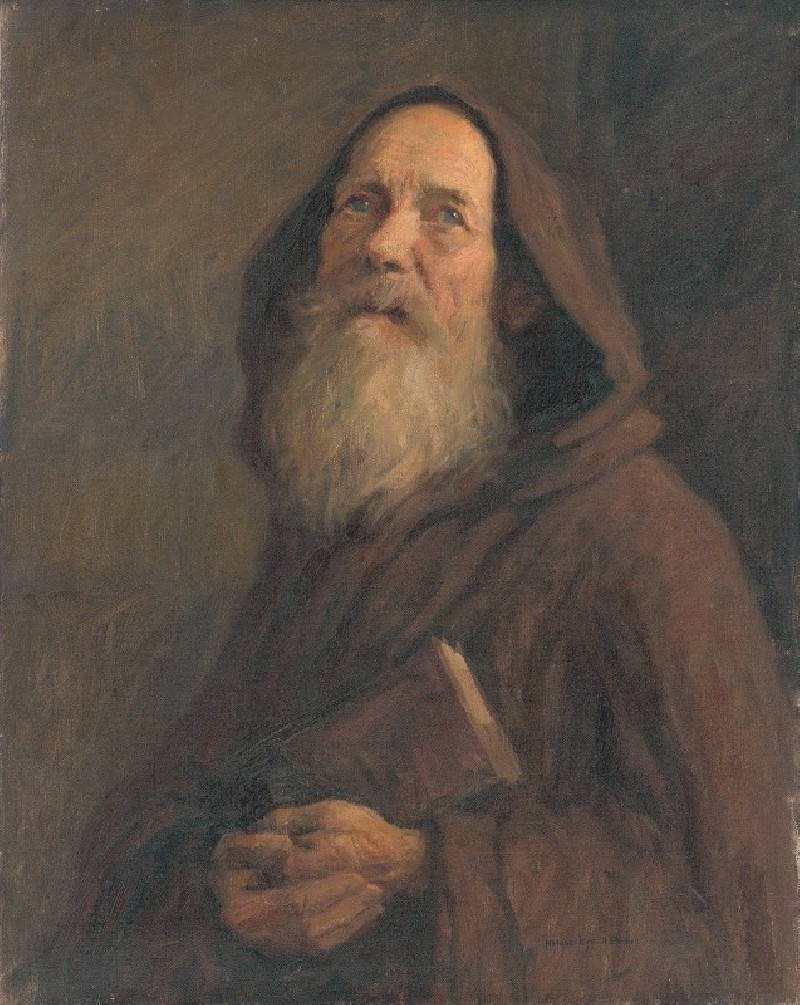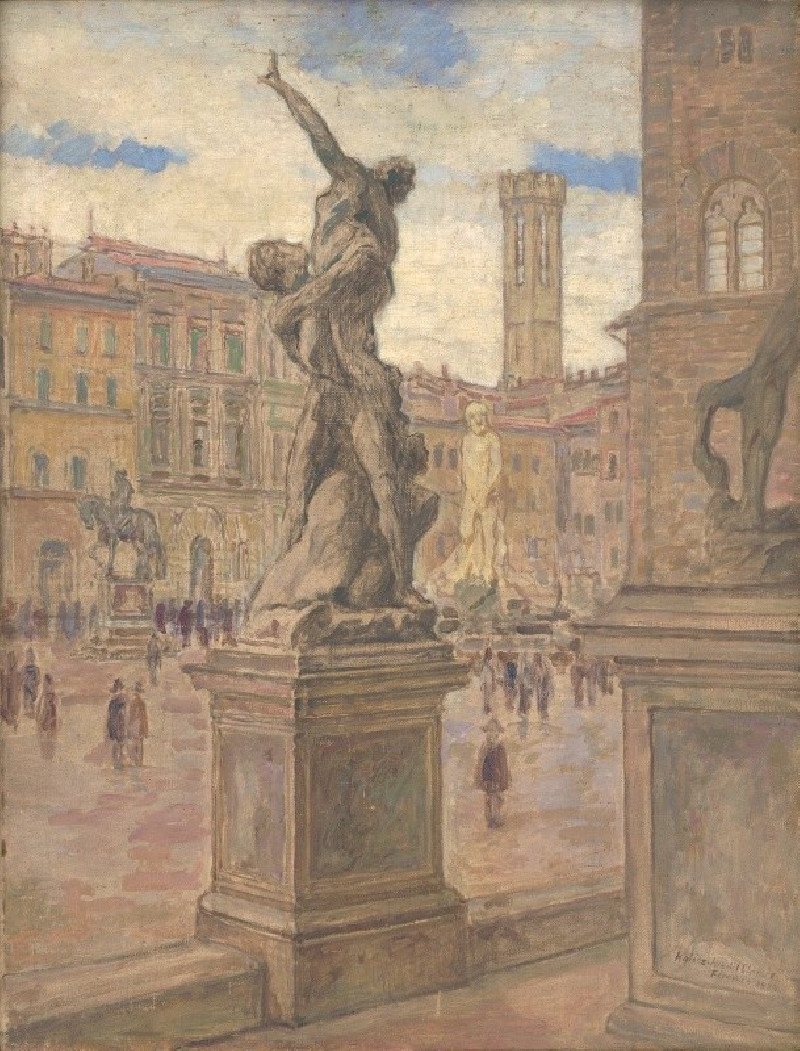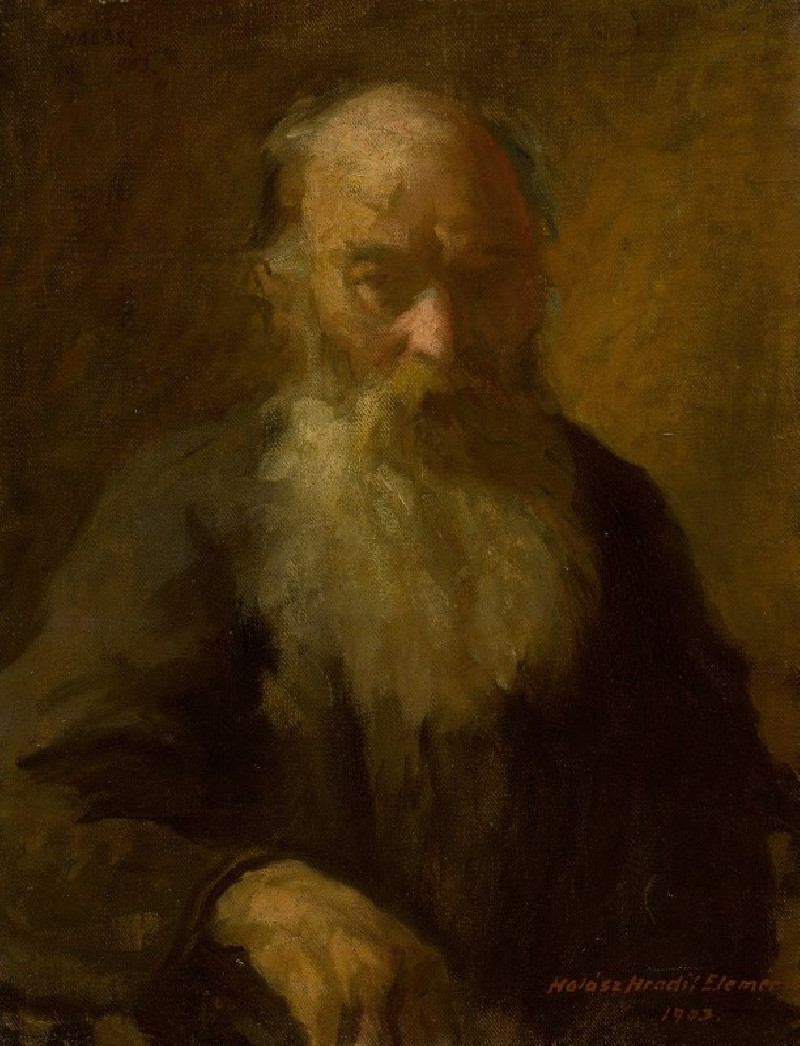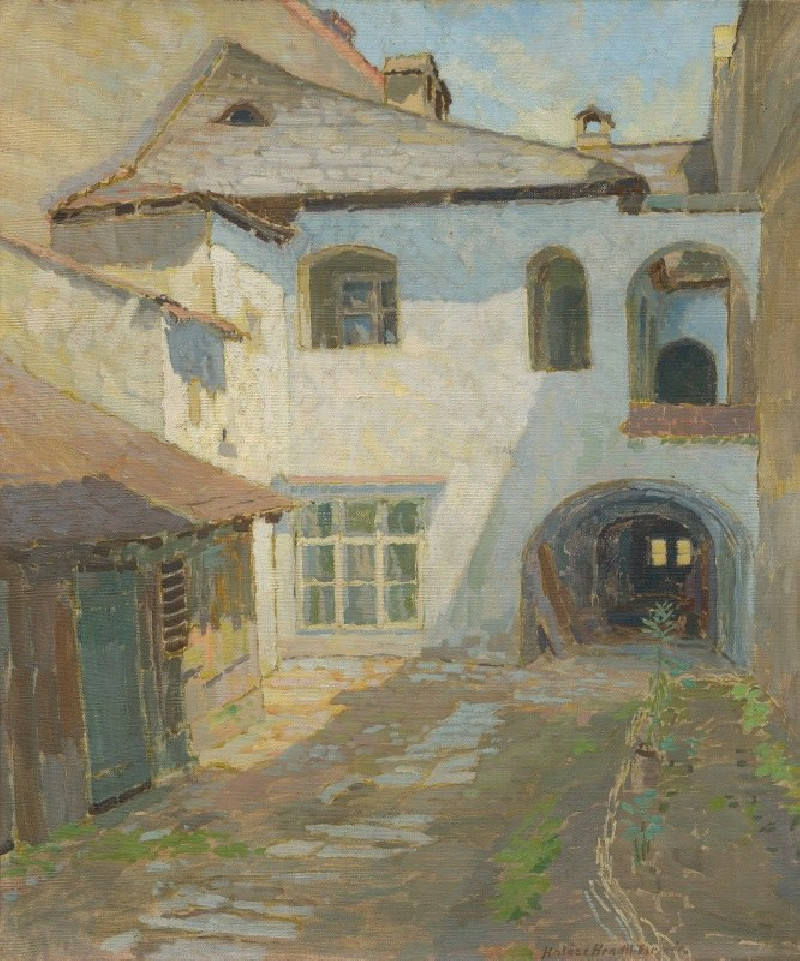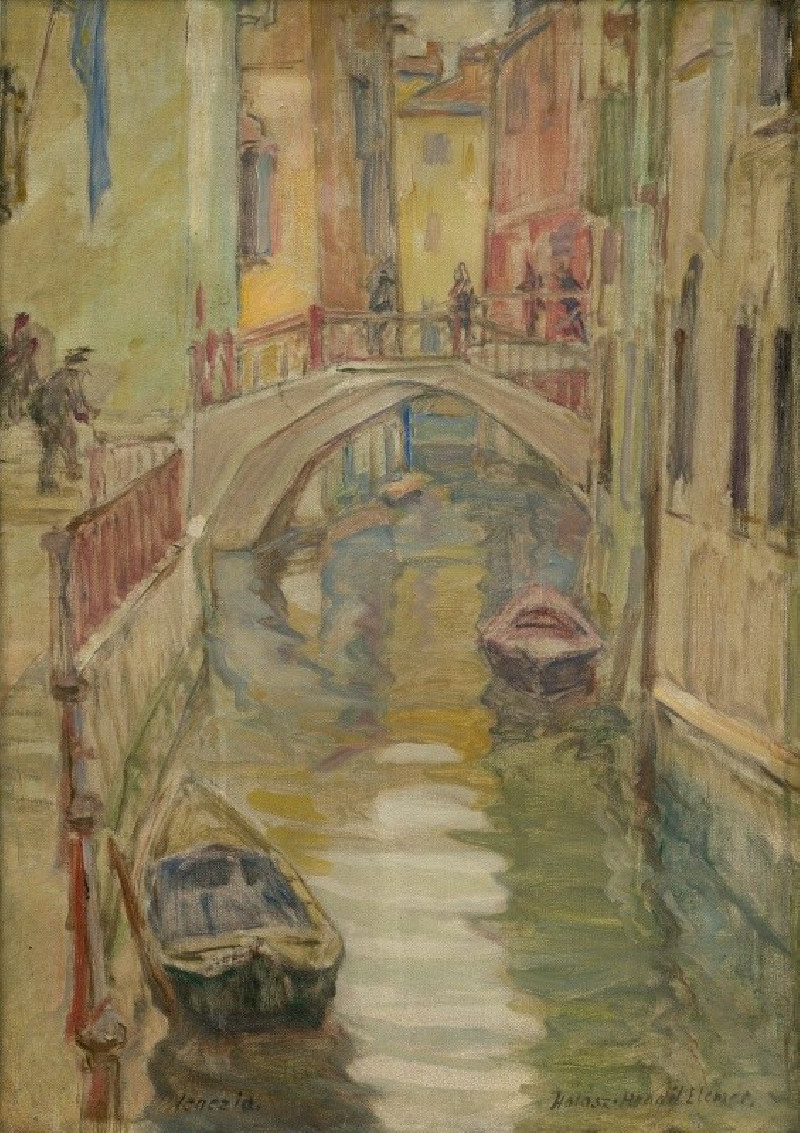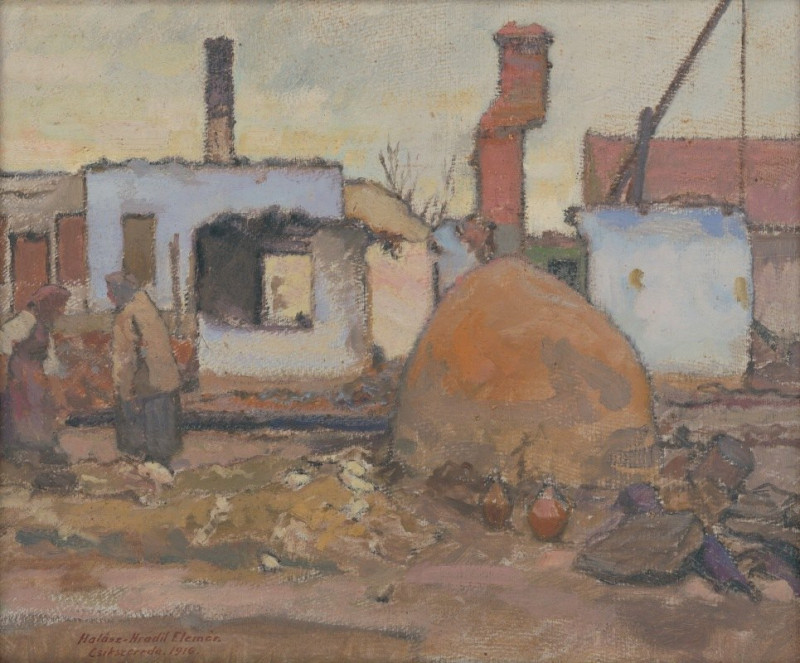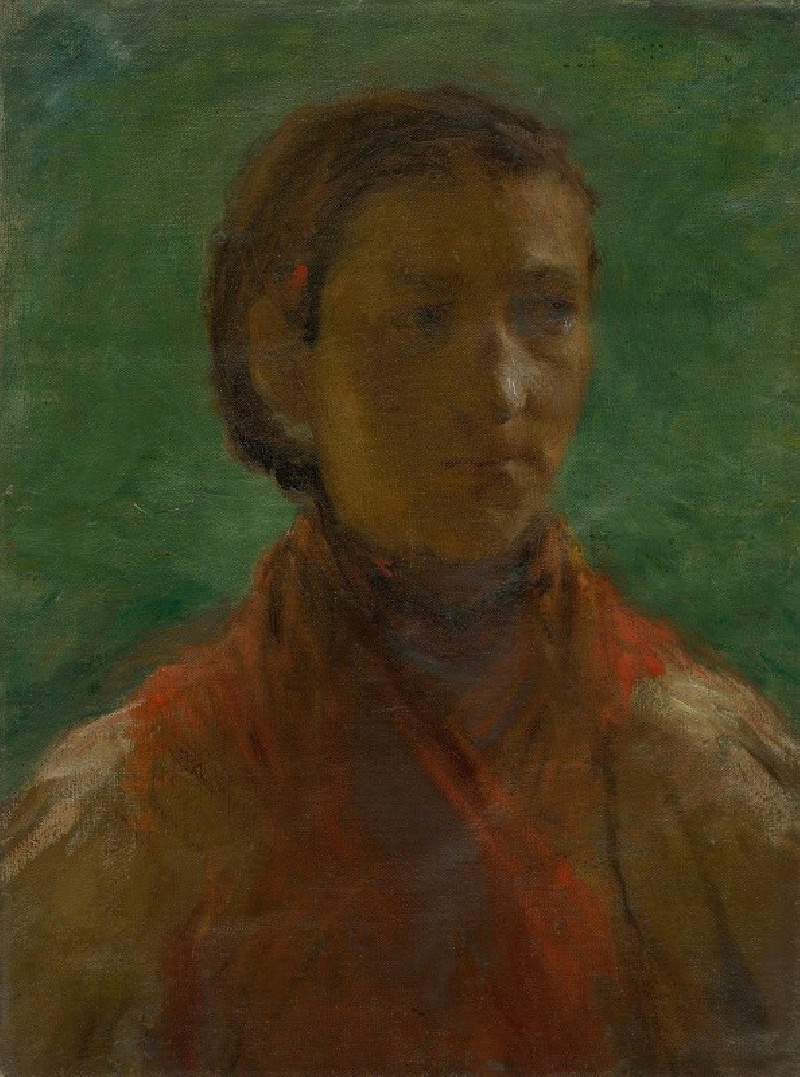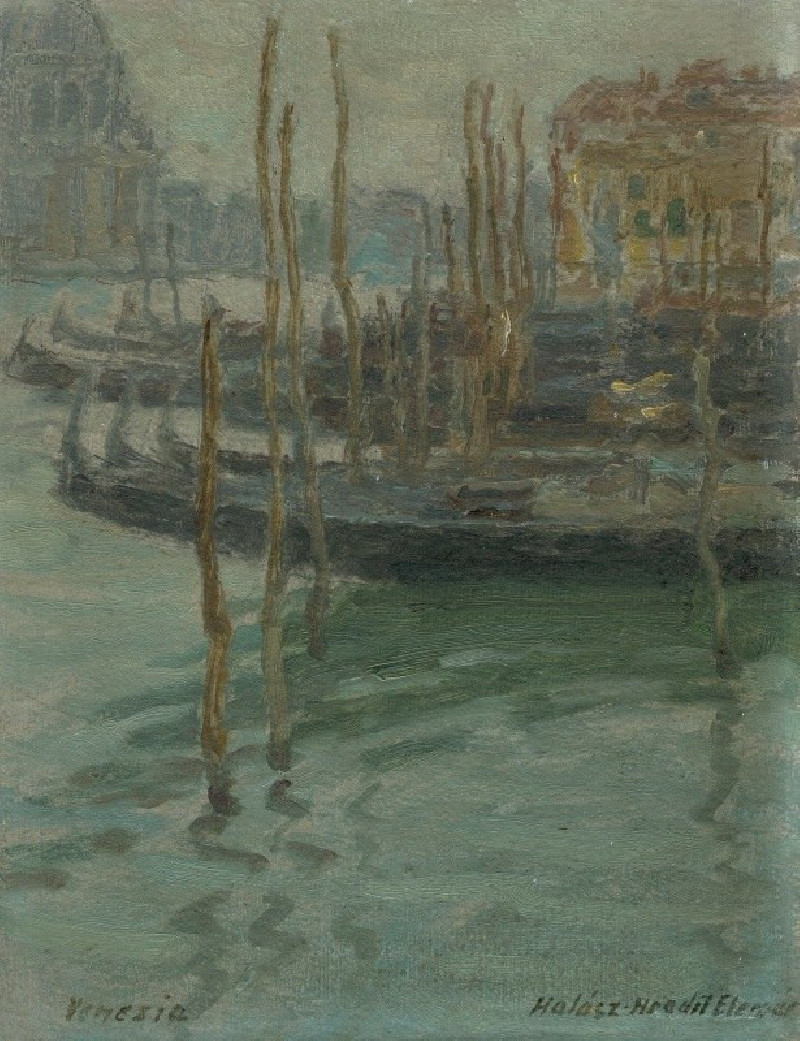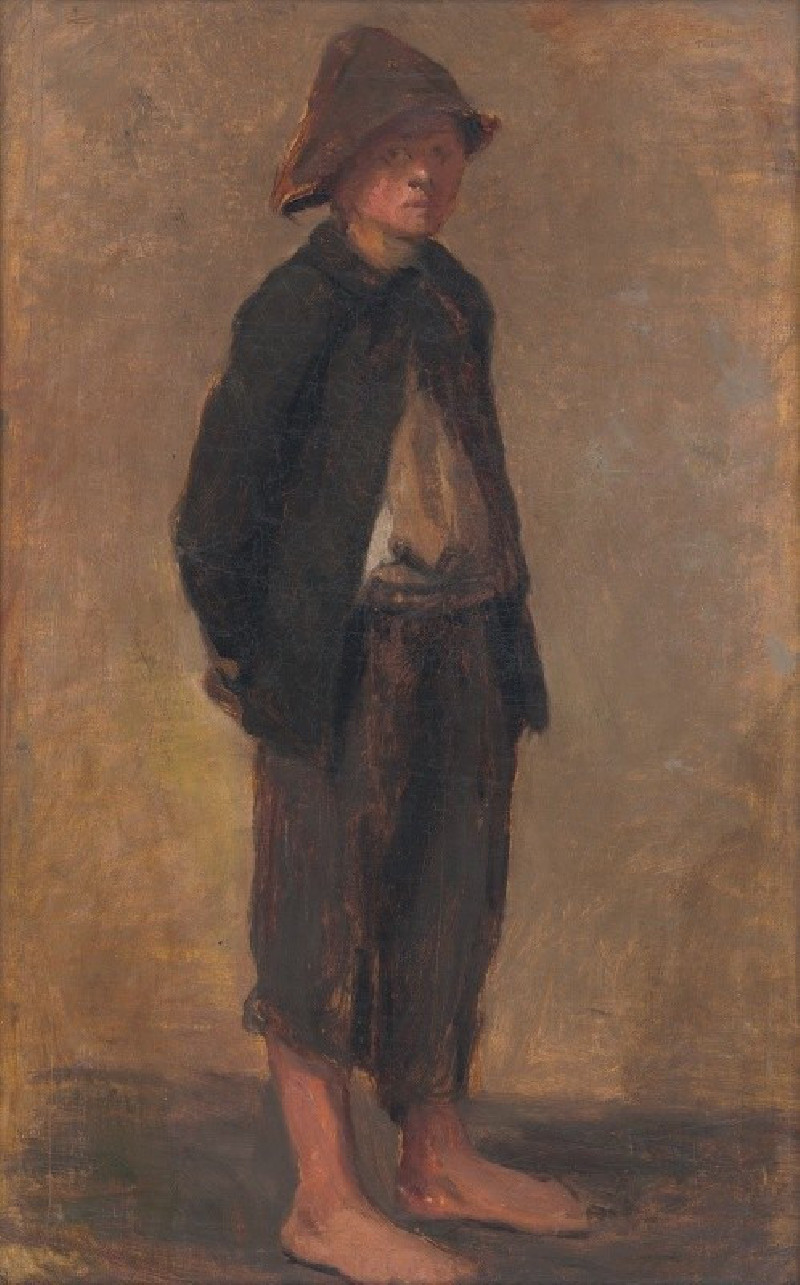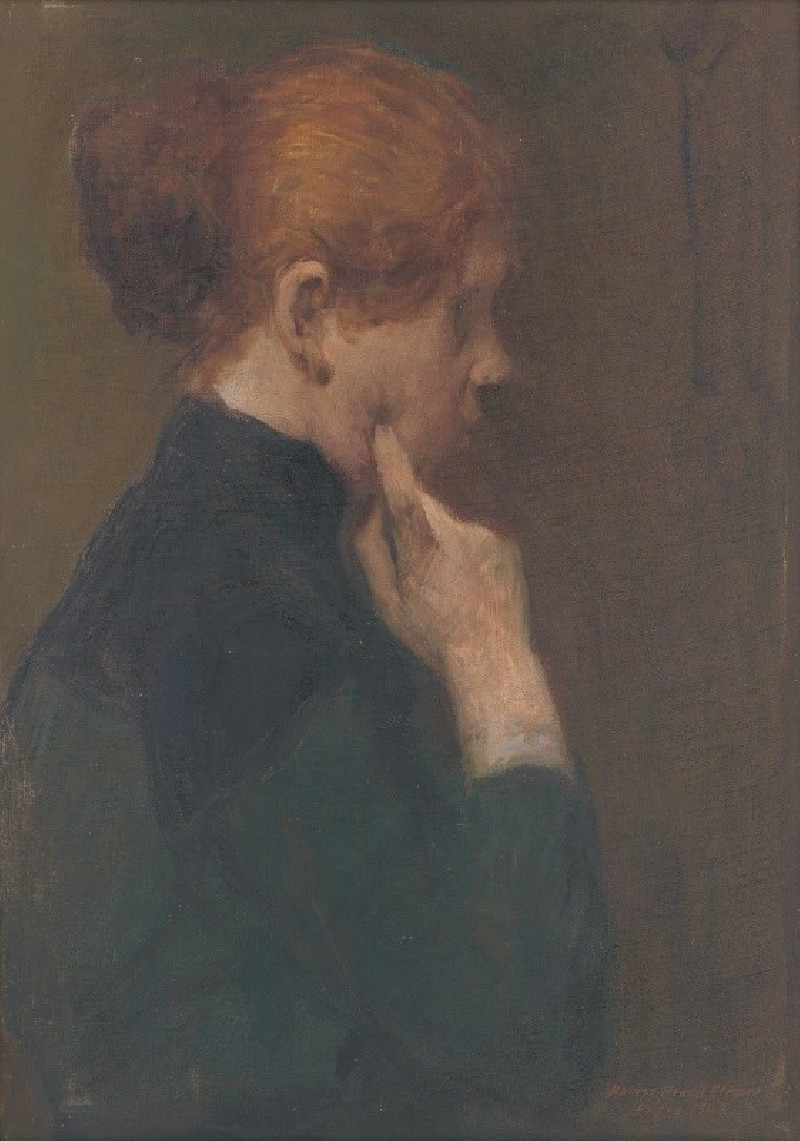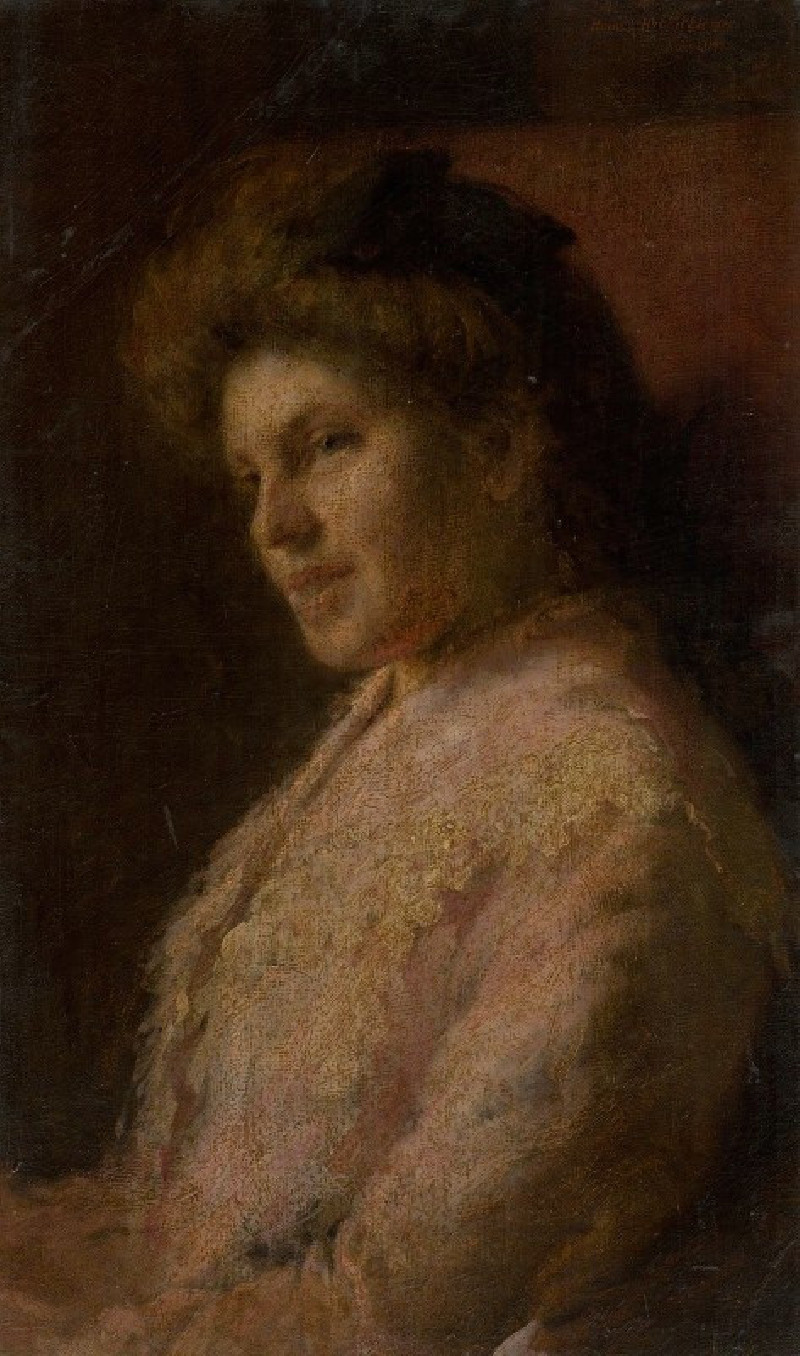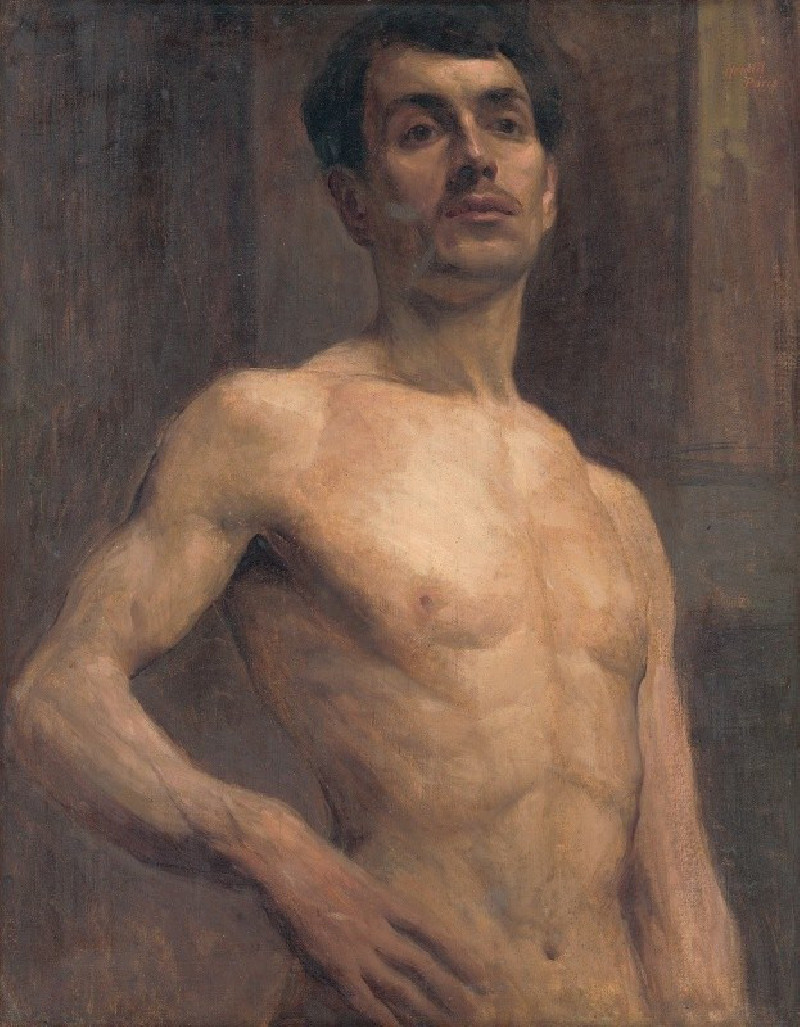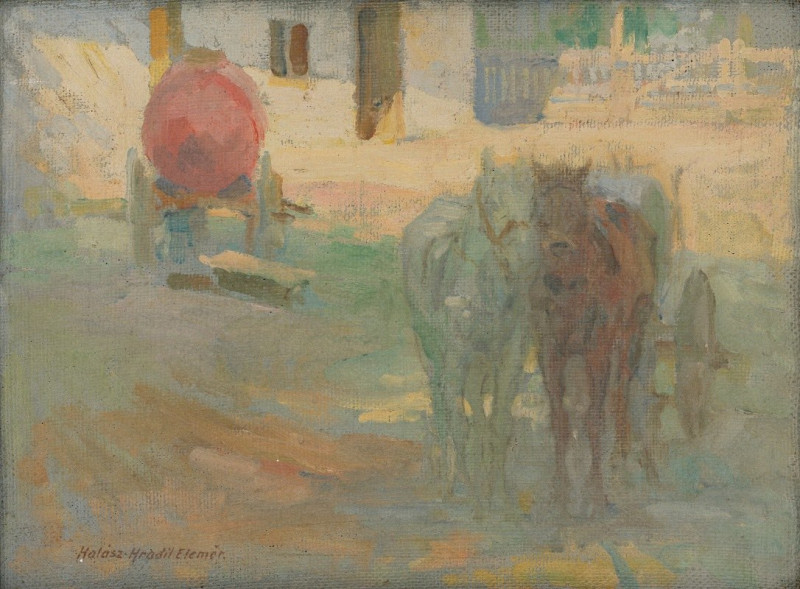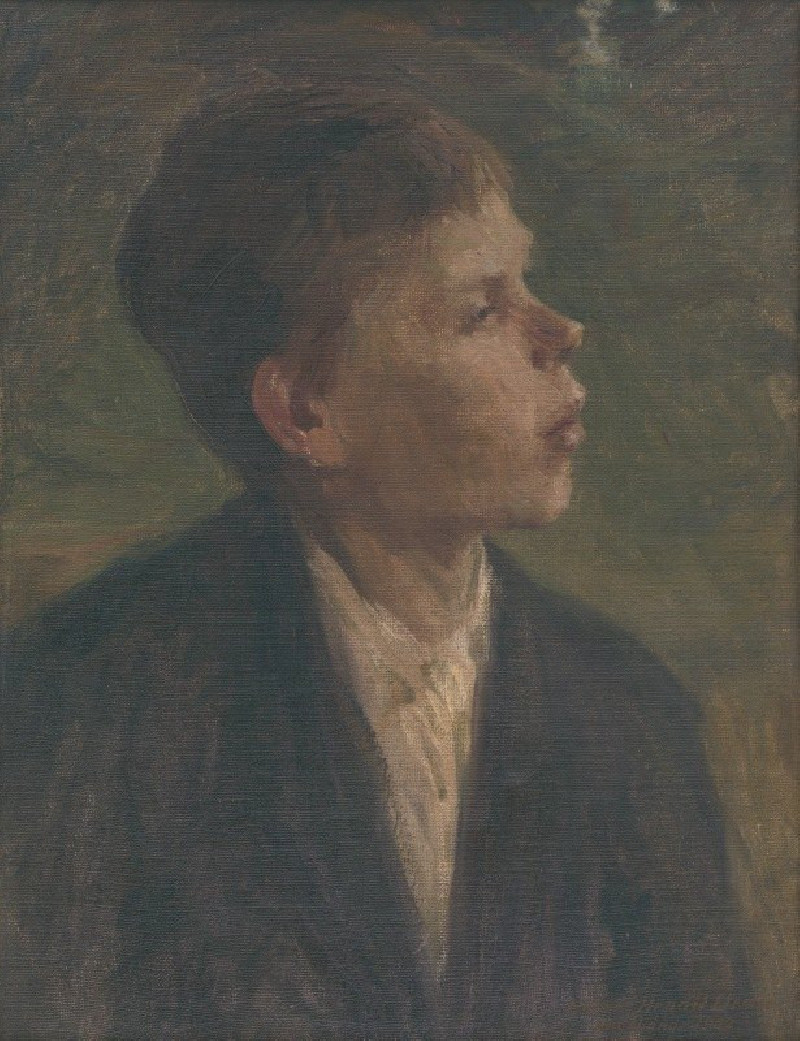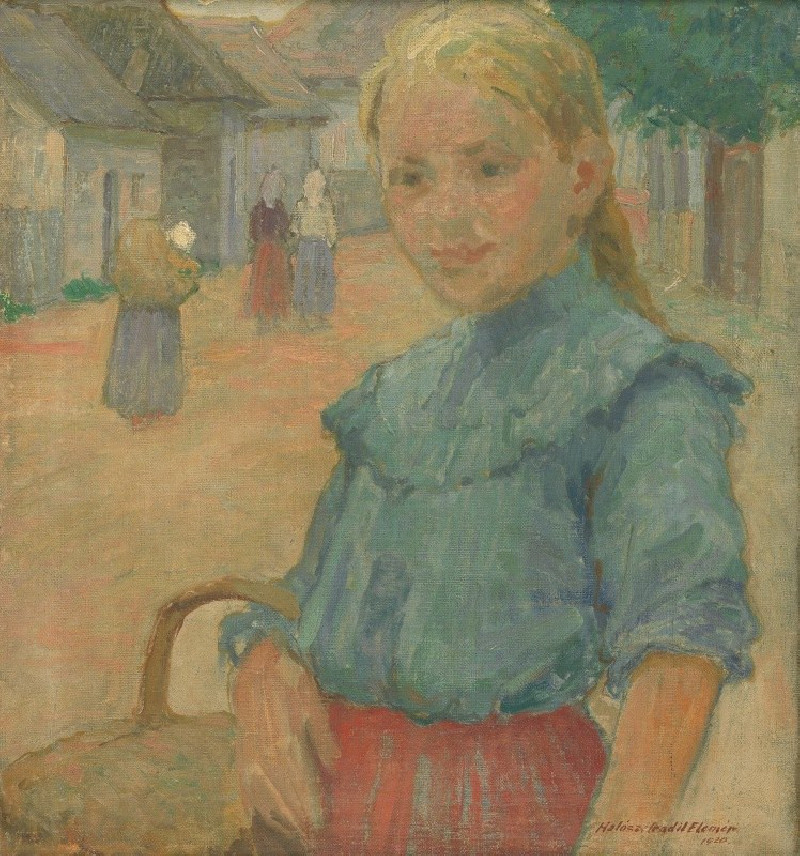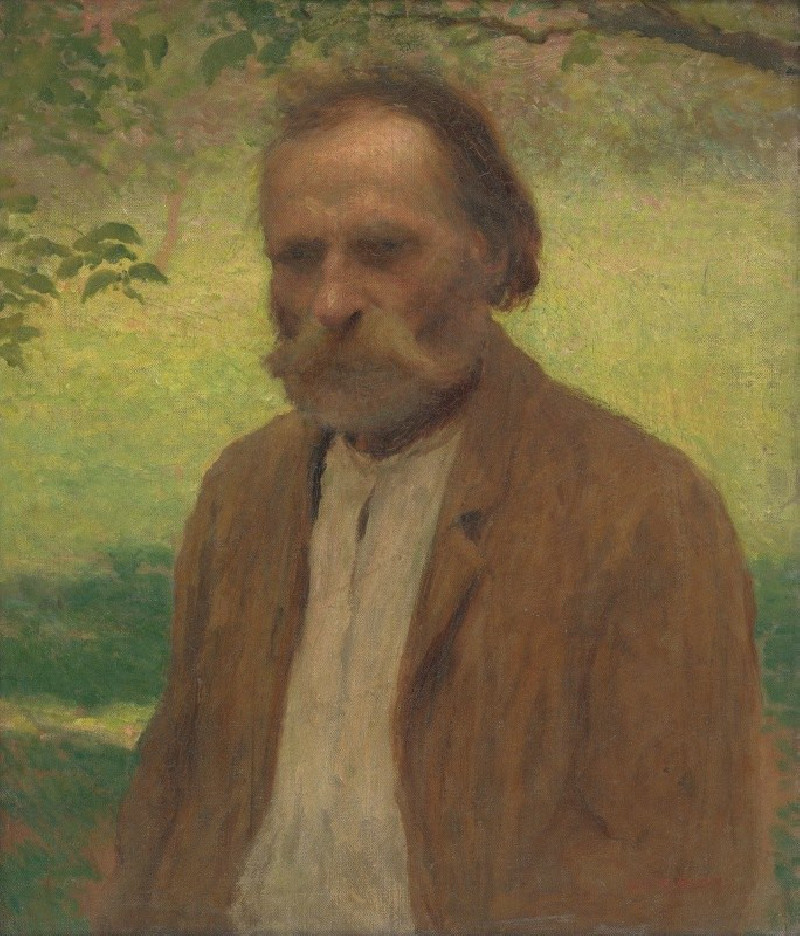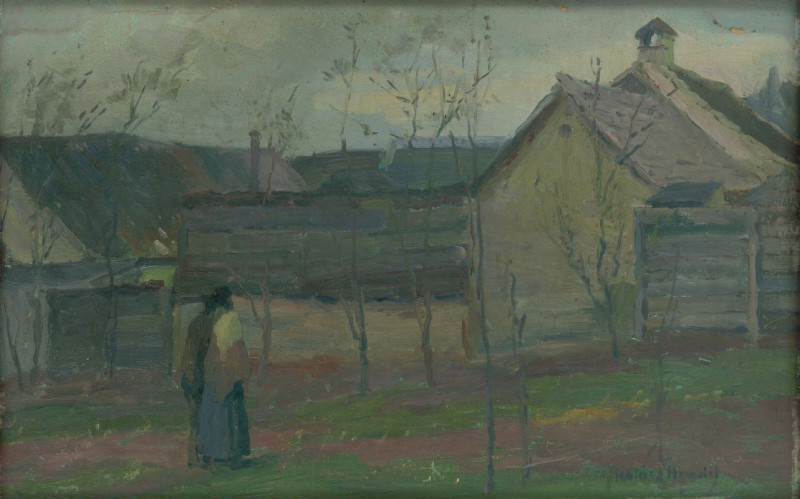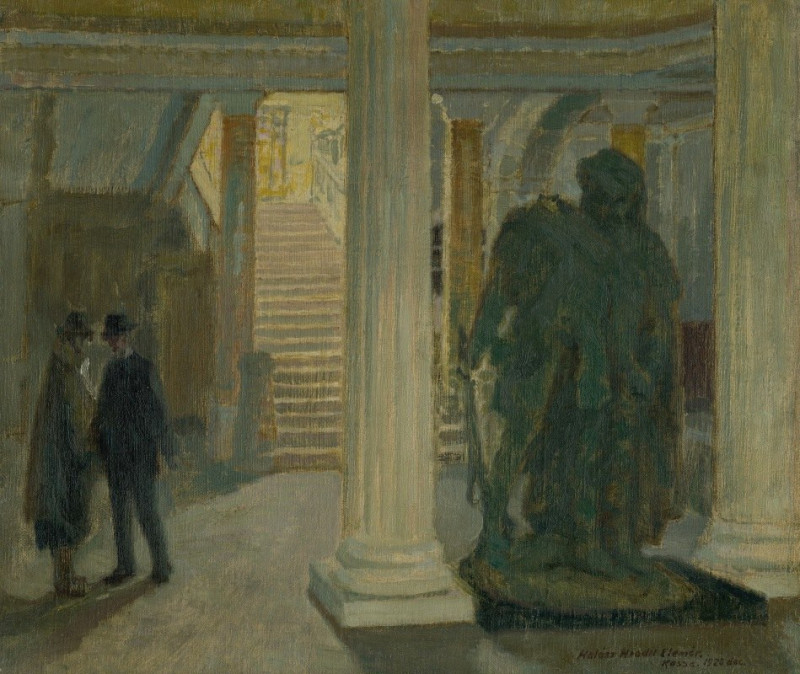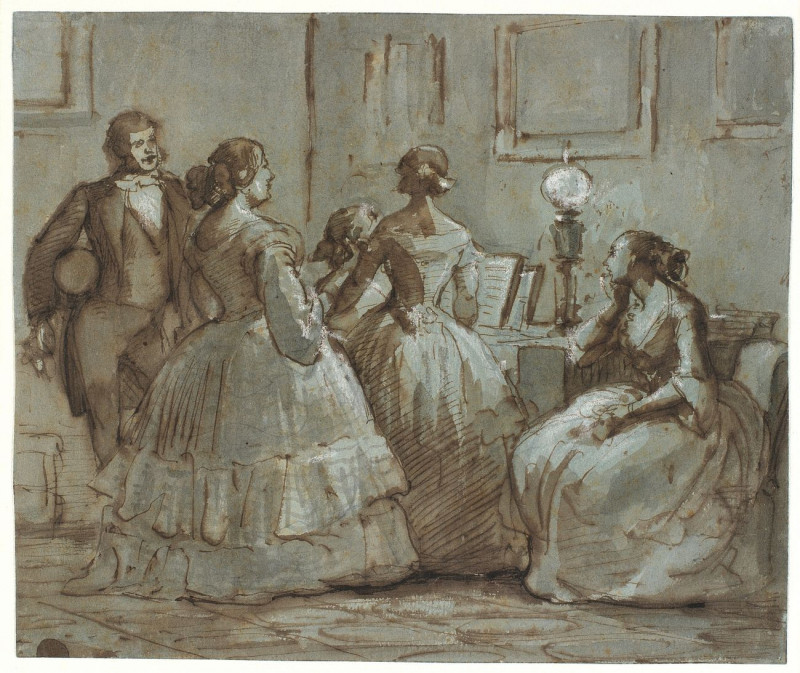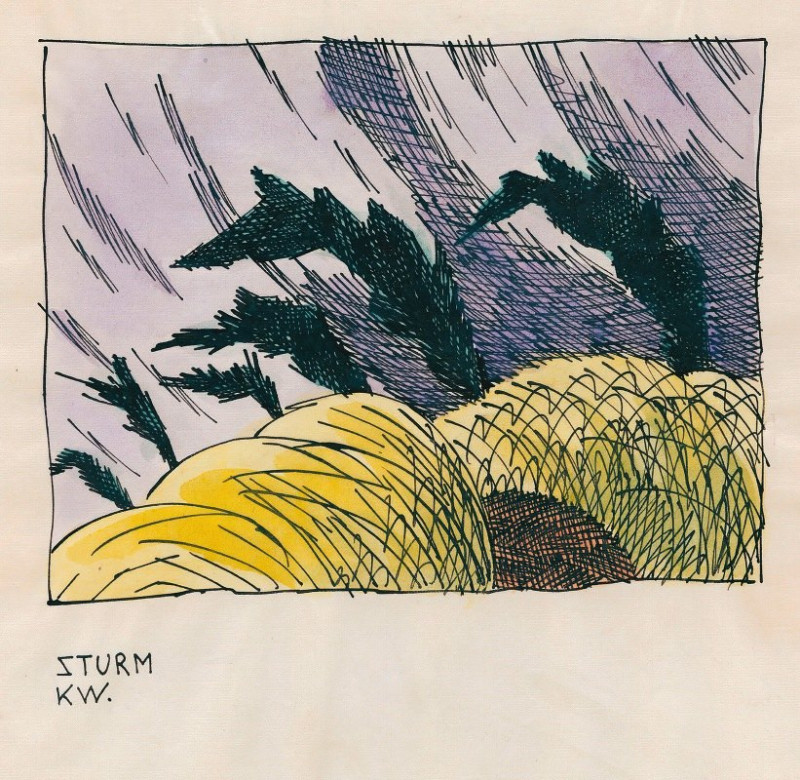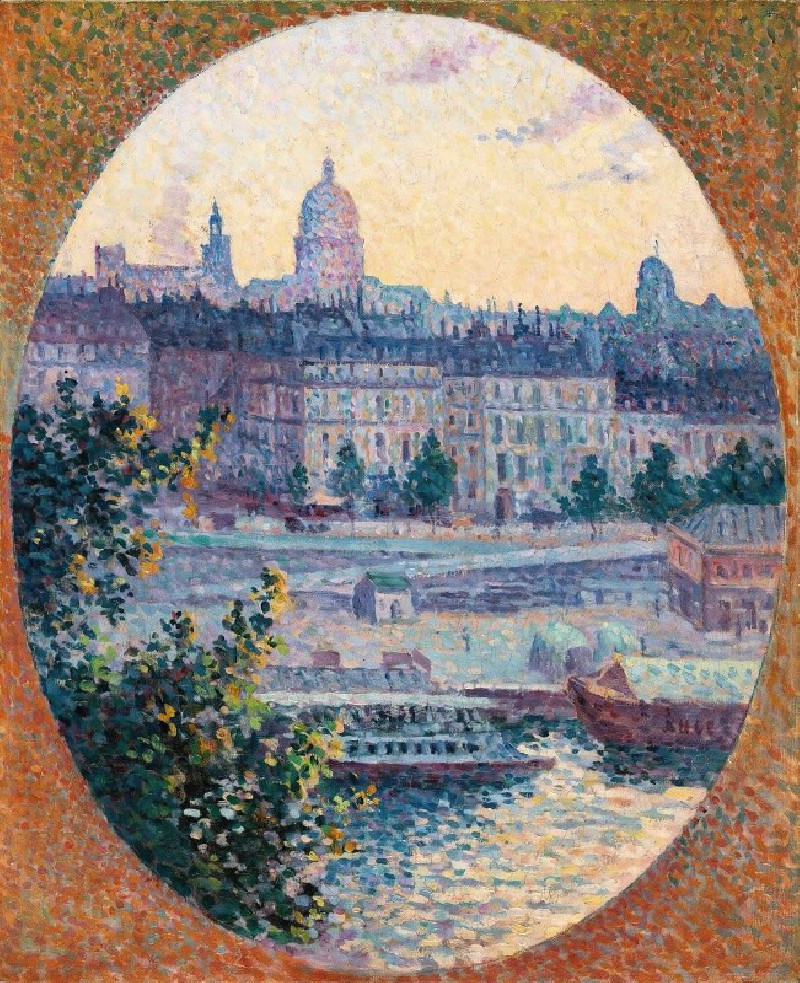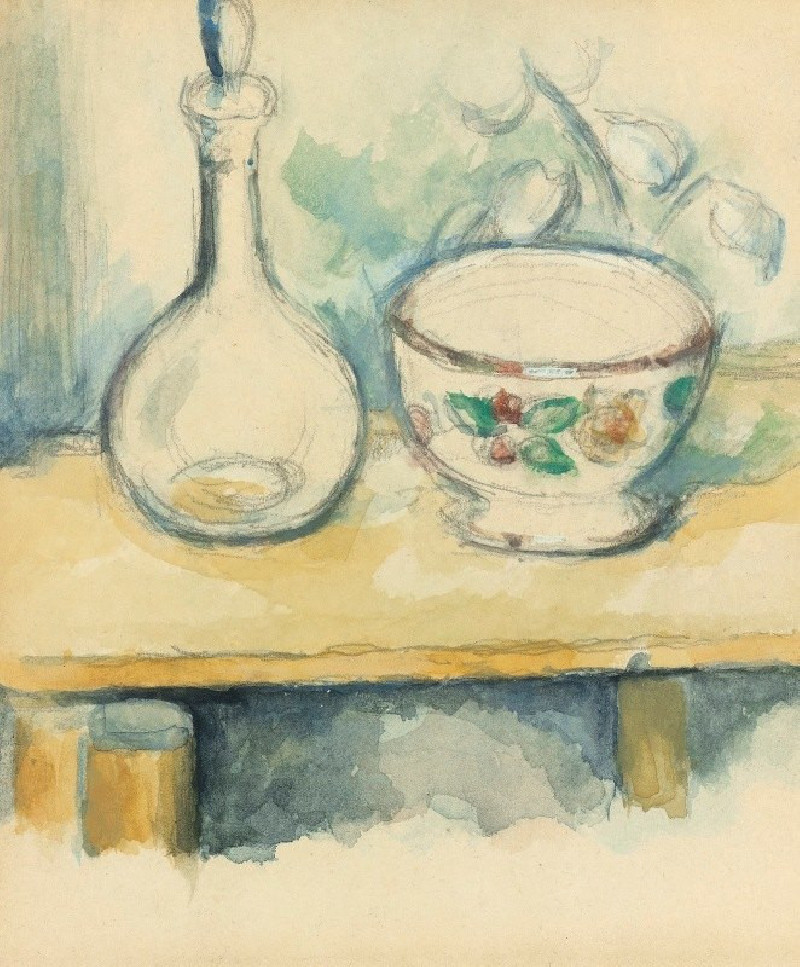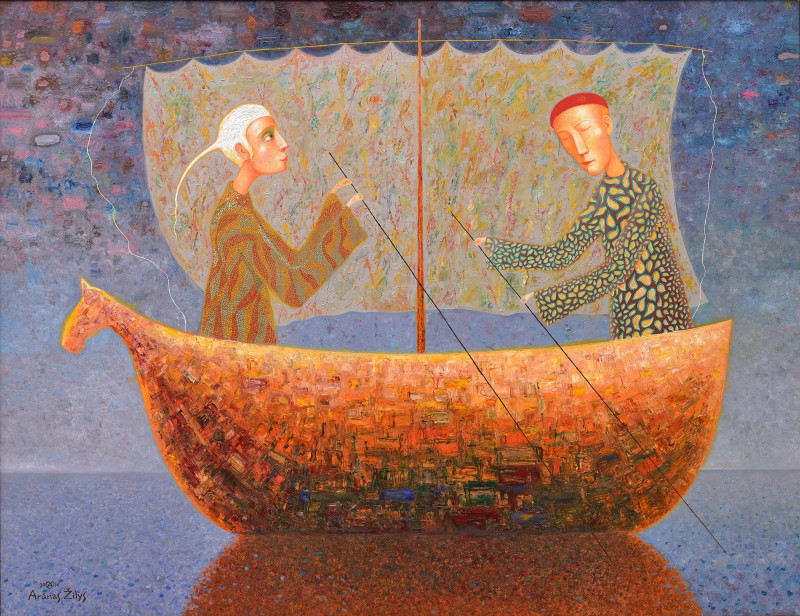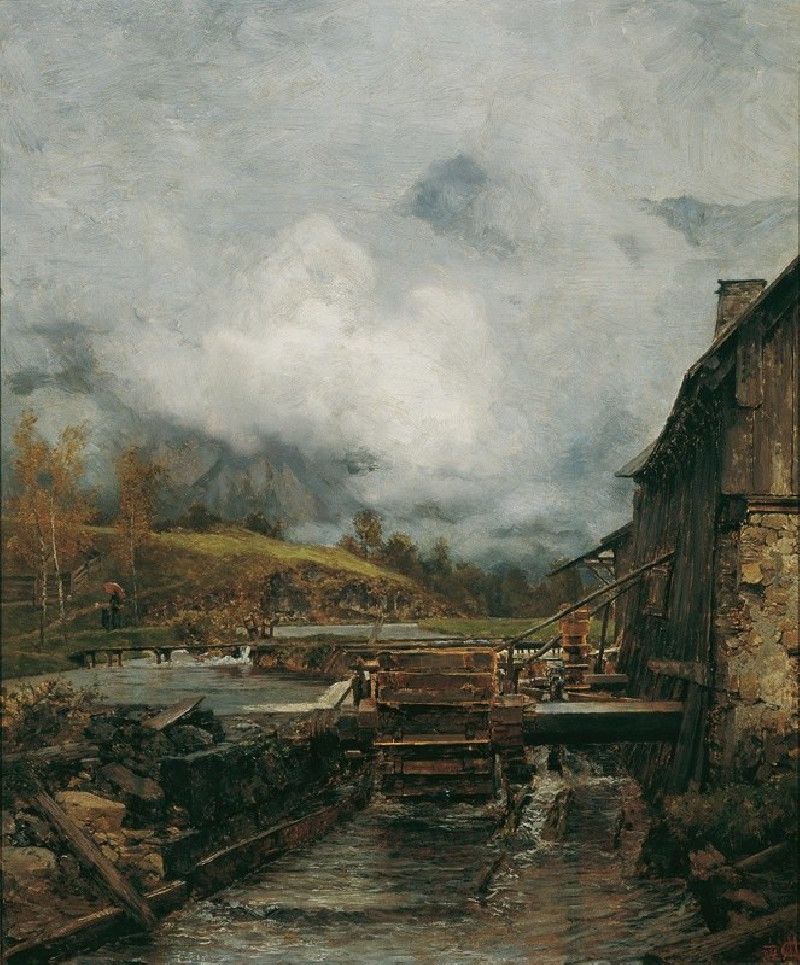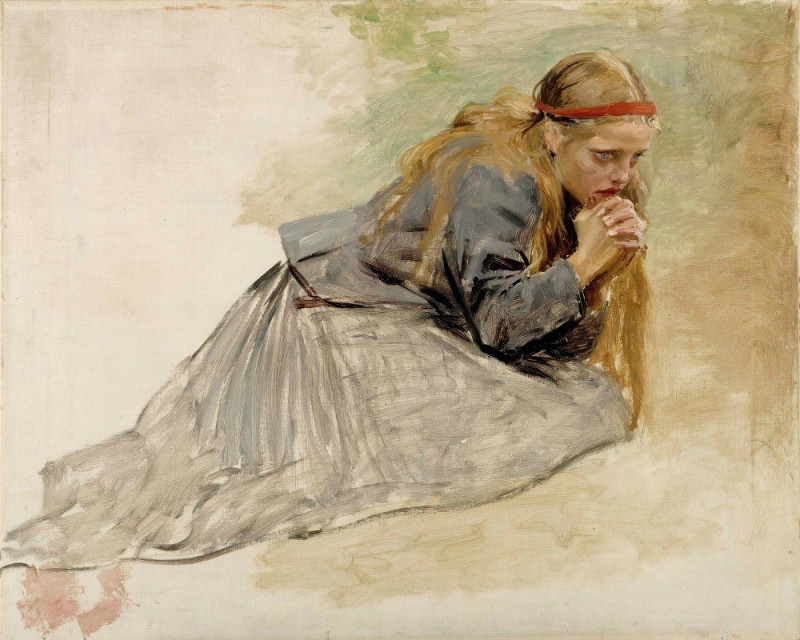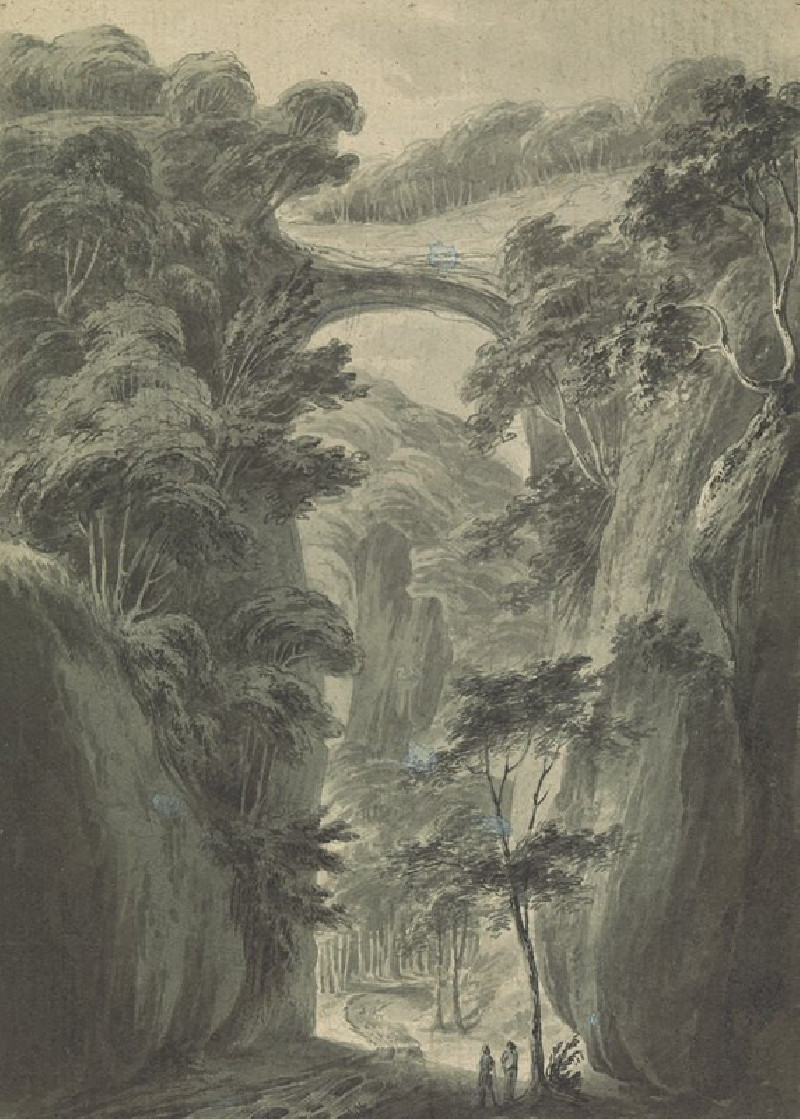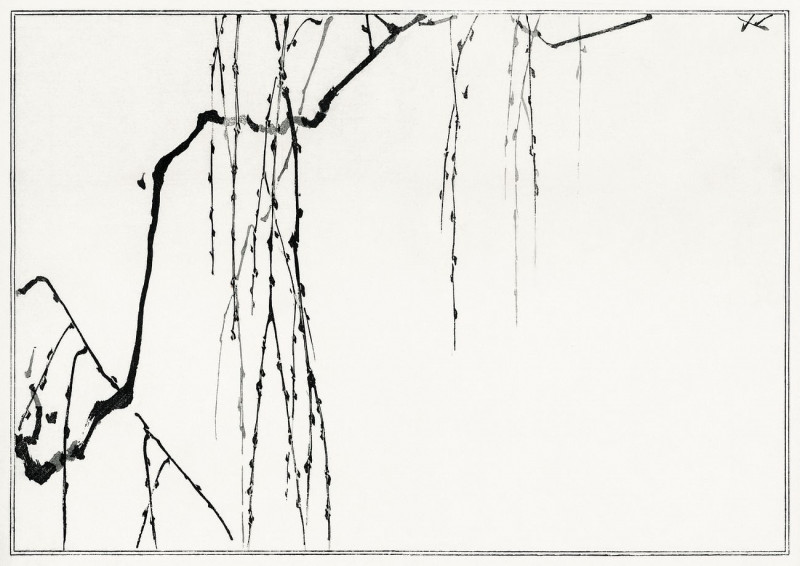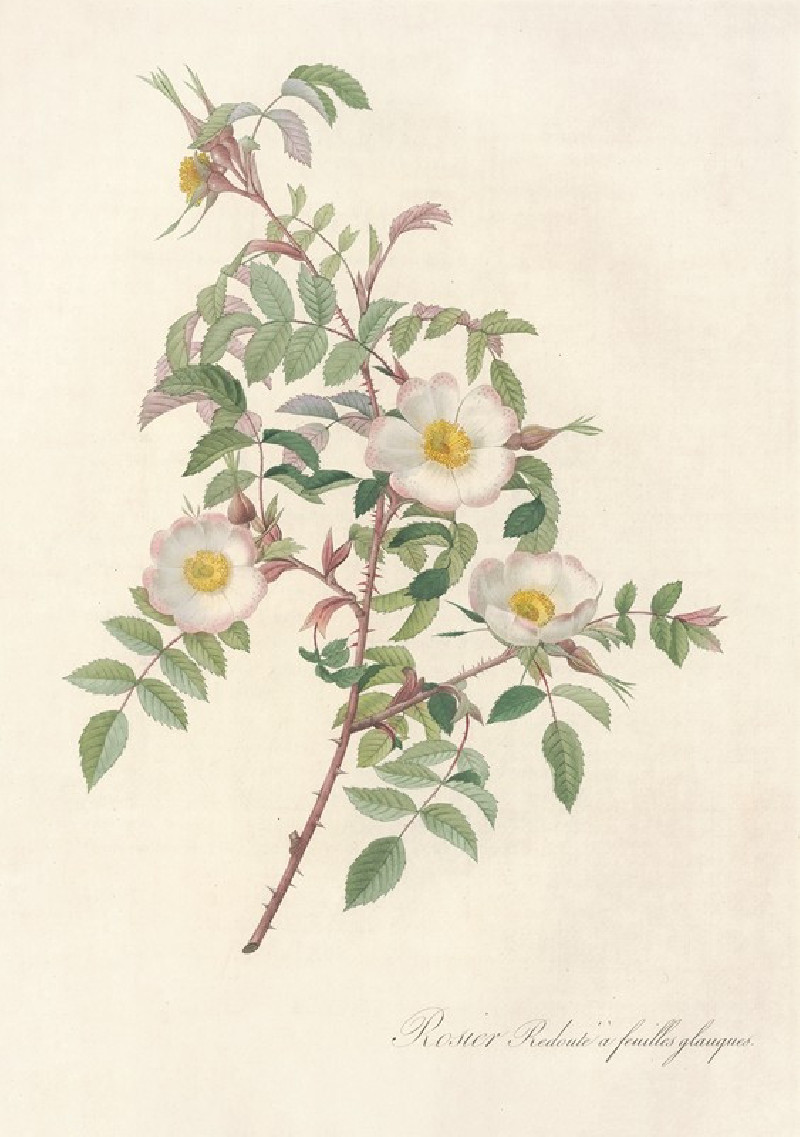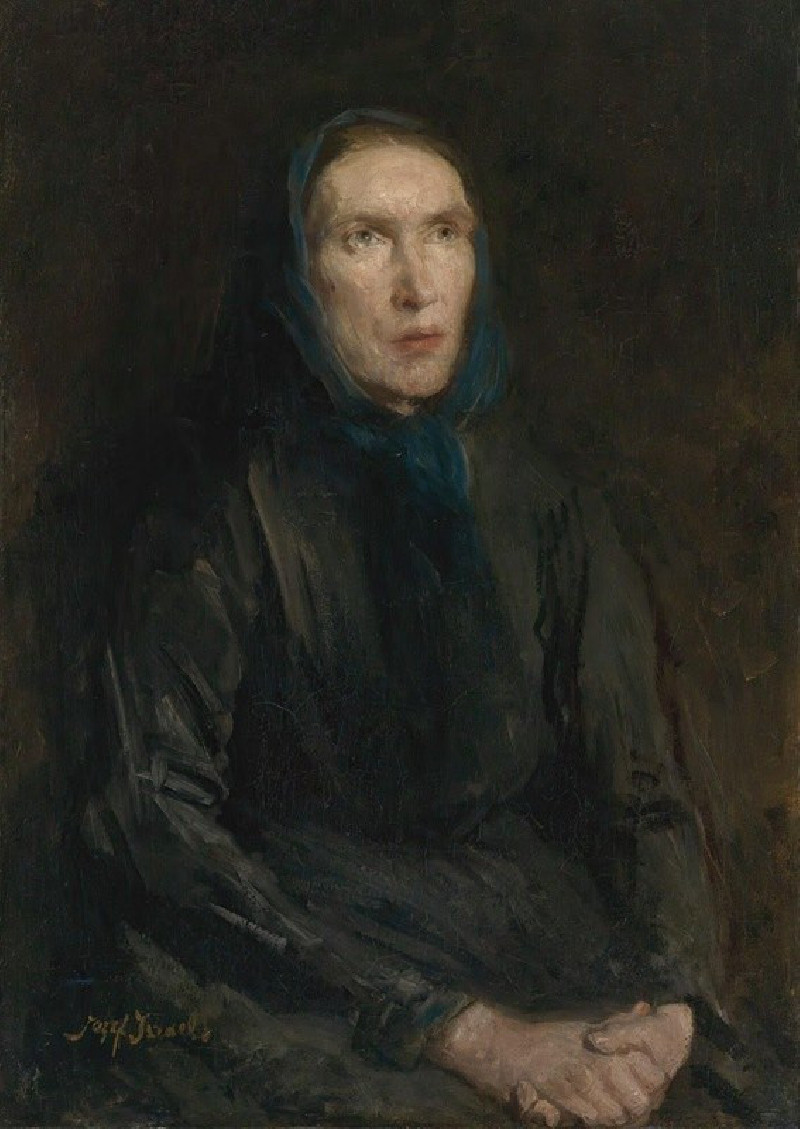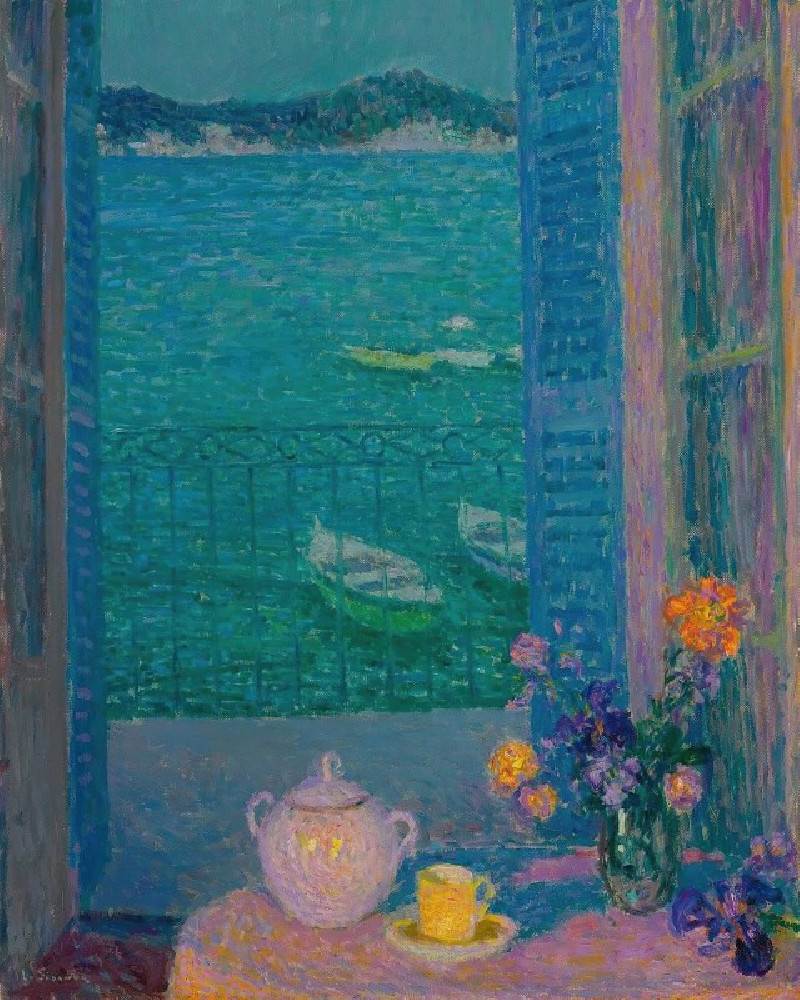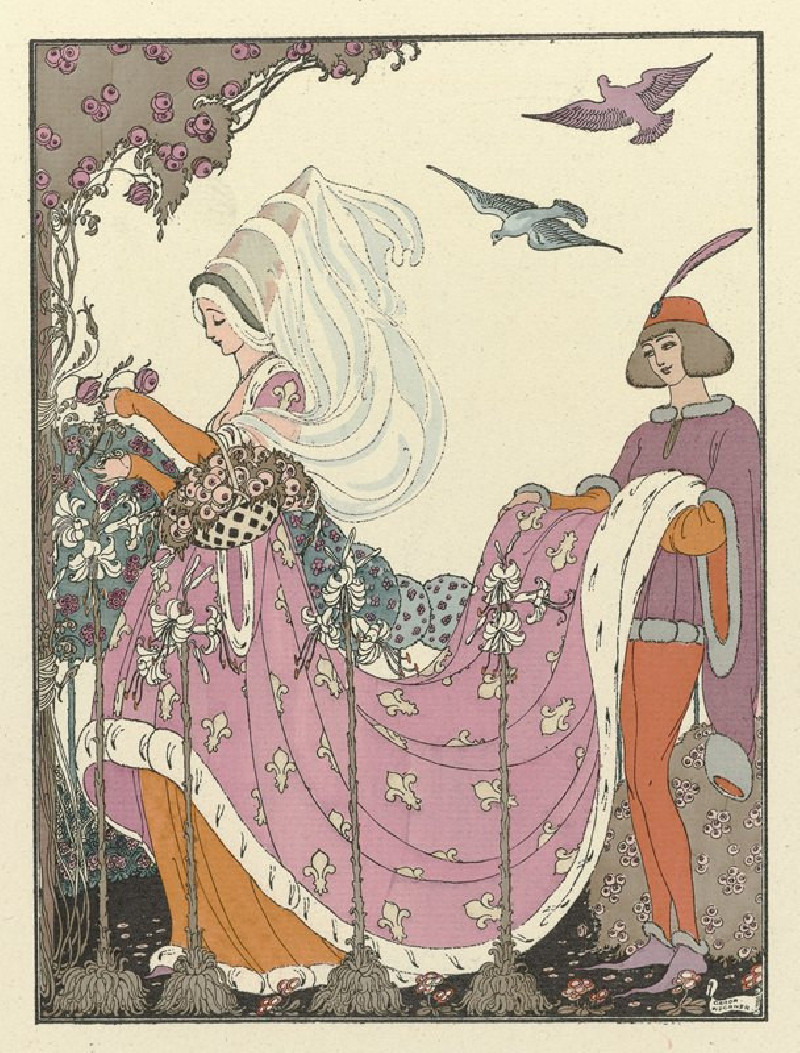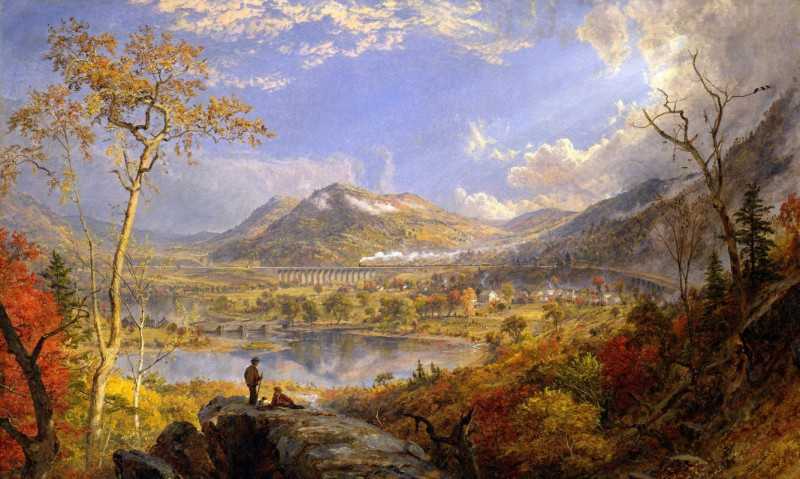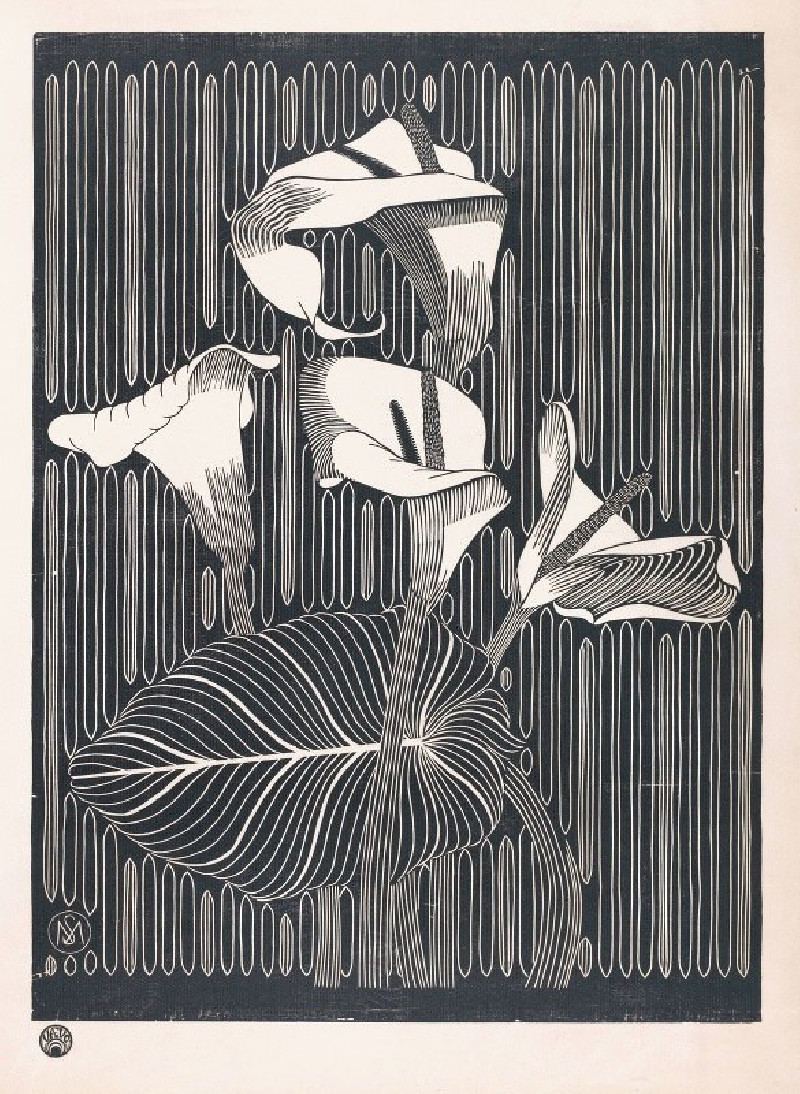Peasant Girl in a Garden (1910)
Technique: Giclée quality print
Recommended by our customers
More about this artwork
Elemír Halász-Hradil’s painting, "Peasant Girl in a Garden," painted in 1910, invites viewers into a serene, pastoral scene alive with quietude and natural beauty. The artwork captures a young woman, dressed in traditional attire, seated thoughtfully in a lush garden. Her contemplative expression and relaxed posture suggest a moment of peaceful solitude, possibly after a period of labor.The artist’s technique allows the landscape to burst with vibrant yellows and greens, creating a backdrop that feels both impressionistic and vividly real. The speckles of colors suggest sunlight filtering through the leaves, dappling the ground and the subject with a soft glow. The casual brushstrokes give the scene a sense of immediacy and life, as though the viewer has stumbled upon this serene moment.To the left, slightly blurred but discernible, another figure in red adds a layer of depth to the composition, hinting at life beyond the immediate tranquility of the young woman’s surroundings. This figure seems to be engaged in daily tasks, perhaps providing a contrast between active labor and restful pause.The garden itself, abundant and flourishing, represents a timeless connection to nature that is both nurturing and aesthetic. The presence of a bowl and a jug next to the girl suggests domestic activities that tie into the rural setting, emphasizing themes of simplicity and the rhythms of daily life in the countryside."Peasant Girl in a Garden" is a testament to Elemír Halász-Hradil’s ability to capture the essence of rural life and the intimate moments of its inhabitants.
Delivery
Returns
Elemír Halász-Hradil (1873 m. - 1948 m.) was a Slovak painter of Hungarian origin.
He lived in Vienna from 1892 to 1894.The following year he moved to Košice. He studied at Simon Hollósy's private school in Munich from 1897 to 1901, he then continued his studies at the Académie Julian in Paris with Professor Jean-Paul Laurens from 1902 to 1903.
With a soft palette and hazy paint handling, Halász-Hradil executed a variety of quiet portraits and scenes of everyday life. Along with selling his paintings, Halász-Hradil made a living as a painting teacher.

